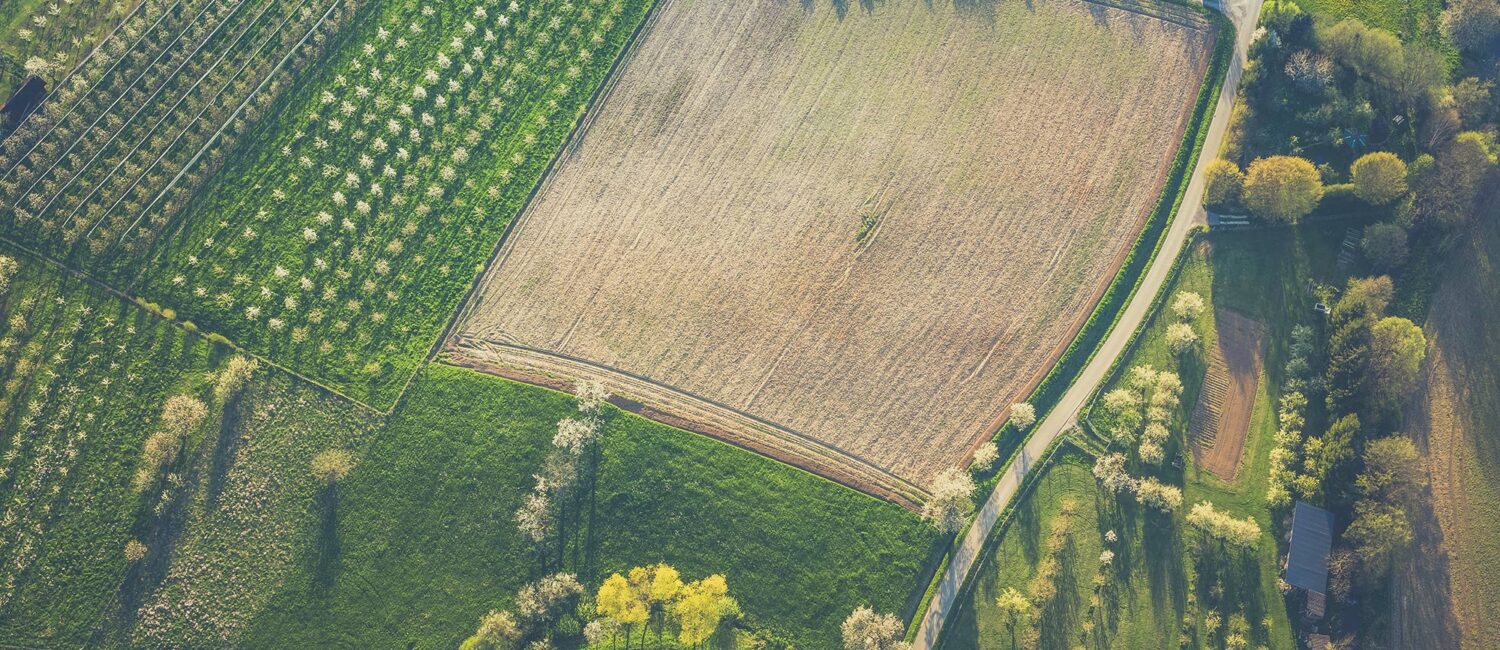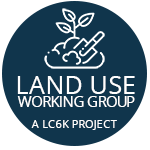
FAQ
LandCover6k
LandCover6k is an international scientific working group of PAGES (Past Global Changes). More details about the overall goals, structure, and approaches of LandCover6k can be found on the PAGES website. Briefly, the project is designed to develop evidence-based global records of land cover (vegetation) and land use (human activity) for the last 10,000 years. Land cover data derive primarily from fossil pollen records and land use data from archaeology, history, and historical geography.
Currently, both global climate models (GCMs) and local climate models (LCMs) use information on past land cover and on the presumed impact of human activities such as livestock grazing, burning, cutting woody vegetation, plowing, and others. This information comes in the form of anthropogenic land cover change (ALCC) models. These models posit trajectories of change based on published population estimates for the Holocene combined with assumptions about human land use and its impact on vegetation. There are significant disagreements between ALCC models, as described by Gaillard, et al. 2010 (see publications). By bringing to bear: (1) direct evidence of past vegetation; and (2) direct evidence of past human land use, we can help correct ALCC models and thus contribute to improving climate models.
The working group has two major tracks and a series of regional and methodological working groups. Land cover aggregation and synthesis, as well as the overall coordination of the project, is led by Marie-José Gaillard-Lemdahl, of the Linneaus University, Sweden. Land use aggregation and synthesis is led by Kathleen Morrison, of the University of Pennsylvania, USA, along with Nicki Whitehouse of the University of Glasgow, UK, and Marco Madella, Universitat Pompeu Fabra, Spain, with Emily Hammer, of the University of Pennsylvania, serving as data manager for global land use.
Land cover reconstructions will use the REVEALS model as well as various other methods of pollen-vegetation reconstruction. Pollen data are centralized in the Neotoma database, which contains various other kinds of paleoecological data as well. Neotoma is a publically-accessible and open database. For land use, we are building a new data structure in collaboration with our colleagues in the paleoecology community. Like all PAGES-related efforts, data and data products will be open and accessible. On the land use side of things, we plan to generate a series of maps of land use and land use impact variables (see LandUse6k FAQ, below). Finally, LC6K includes ALCC and other modelers, with improved models a key product of the collaborative effort.
For some parts of the world, it will be possible to dissect temporal variability in more detail. Wherever that is possible and we have the personnel and funding to do so, we will. At present, the work focuses on these timeslices chosen in collaboration with ALCC modelers: 12kya, 6kya, 4kya, and CE 1500.
Sign up on the PAGES website. If you have a particular set of interests, feel free to contact one of the coordinators. You can also contact chadhill@sas.upenn.edu.
Land Use Working Group
This is the working group of LandCover6k specifically focused on the land use reconstruction portion of the larger project. The scholarly community involved in studying human land use history is extremely large and diverse, crossing disciplines and data sources to a much greater extent than the land cover change community.
Land use refers to how people live on a landscape, how they use it (and remake it). Basic land use categories such as foraging (hunting & gathering), farming, pastoralism, mining and other extractive industries, and dense settlement always encode significant variability and thus any classification system is necessarily a simplification. Land use systems are typically mosaics, and may be highly flexible in time and space. Furthermore, we have variable forms and levels of evidence for past land use regimes. Thus, reconstructing global land use across the Holocene represents a significant challenge. However, we can also point to more than a hundred years of historical scholarship; we do know something about past land use even though this information is highly dispersed and in diverse formats. The limitations of ALCC models, coupled with their use in LCMs and GCMs, make it clear that the time to mobilize this body of scholarship has arrived.
Because they are closely related and those relationships are of interest. Separate but coordinated analyses will allow us to study what the effects of specific forms of land use are on land cover, even when (as we suspect) similar forms of land use have differential impacts. Furthermore, ALCC and other models assume specific relationships between population, land use, land use intensification, and land cover change, among others, and we can only address these assumptions with empirically-supported arguments that show the limitations of current model assumptions.
We have constructed a single, globally-agreed-upon classification system to record land use. This is a hierarchical scheme, with more detailed and specific categories available for more regional and local analysis. At the broadest level, we classify land-use into one of 5 categories: (1) no evidence for human land use; (2) Minimal/Extensive use; (3) agriculture; (4) hunting, gathering, foraging, fishing; (5) pastoralism; and (5) urban/extractive industries. Check out the “initiatives” and “resources” pages for more details.
Yes. But the earth is very large and we aim in the first instance to deliver analyses that can be used by the global modeling community, with whom we are working.
Of course. But we are going to have to have definitions and guidelines. All classifications destroy, to some extent, the specificity, beauty, and variability of the evidence. But we think there are emergent properties of the evidence at these larger scales that are worth pursuing.
We do too. But the modelers are going to proceed without us if we don’t bring our own evidence to the table. Part of what we need to do, besides deliver better information than what the models now predict (have a look at your region and see what you think of the current hindcasting), is to educate the scientific community about the complexity of human land use and its drivers. We have to be part of the conversation to do this. As noted, we can build our classifications to a much greater extent, with many different types of farming, foraging, or whatever. Will these prove to be significant at large spatial and temporal scales? We think so, but this is an empirical question; we have to demonstrate this and not just assert it.
Besides the pollen data being aggregated by the land cover teams, the land use group will record specific attributes of human land use that have the potential to have significant effects on the earth system. Among these are variables related to grazing and domestic animal use, tillage, landscape-scale burning, the use of specific crops such as rice, wheat, etc., the use of irrigation and major landscape modifications such as terracing, pyrotechnologies such as metal production, and, where possible, information on manuring/fertilization. These variables are all included in the database structure.
No. This is an effort to aggregate, commensurate, and compare evidence, both for the use of modelers and for the larger community. Expert judgement will necessarily come into play in all parts of the project, from identifying pollen grains to classifying land use, and we are working on protocols for recording robust metadata that will allow users to track the sources of information behind the maps and variables.
Yes. We are working to address critical global concerns while at the same time building research tools, databases, and research networks to address land use and land cover history at more regional and local scales. Part of this effort is to build out more specific lower-level, detailed land use classifications that will be useful for scholars working at small spatial scales and to provide tools that will allow smaller-scale studies: (1) to feed into global analyses; and (2) have a home where they can be seen and used by people around the world.
Yes. These time slices are just the minimum. For land use in particular, the later periods engage historical data more directly, while the earlier periods require more archaeological evidence. As such, we are going to have to go after these time periods in ways that reflect the distribution of data and expertise. Furthermore, we are responsive to scholarly interest in specific issues within the historical land use community. As such, we will be working on some specific problems such as the establishment and expansion of early farming, the intensification of agriculture, and changes associated with European colonial expansion.
Yes, this has been established for land cover already. We are working to try and commensurate our temporal ranges.
We are working with the developers of GLOBE: Global Collaboration Engine, to add the capacity required by LandUse6k to this data platform. As noted, pollen data are coordinated through Neotoma and other regional pollen databases. The data management and analysis needs of this effort are considerable, and we are just getting started.
Regional land use leadership teams, working in collaboration with global land use leadership and colleagues with appropriate expertise in specific times and places develop prototype maps (and a linked database) for each time slice. We then convert these prototype maps, and site databases, to our global classification system. Finally we work with scholarly communities to collect commentary and corrections for these maps.
Actually, no. Although we have applied for some larger grants, at present we are working with very small pots of funding and a tremendous amount of good will and enthusiasm for what we think is an extremely important effort. Here is a chance for archaeologists, historians, geographers and others who may or may not have any specific experience working with global change science, with modelers, or with large-scale collaborative efforts to use their data to help make a difference.
Want to get involved? Email chadhill@sas.upenn.edu.
Land Use Working Group
A LC6K Project
Want to get involved?
Email chadhill@sas.upenn.edu
© 2021 Land Use Working Group

